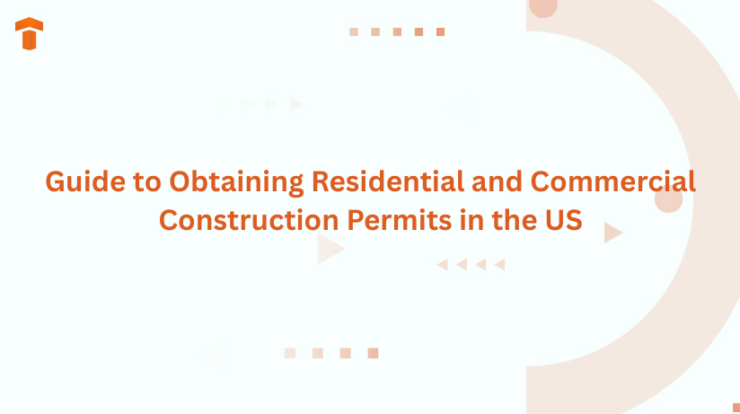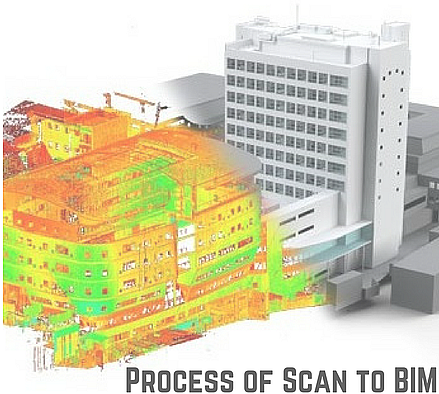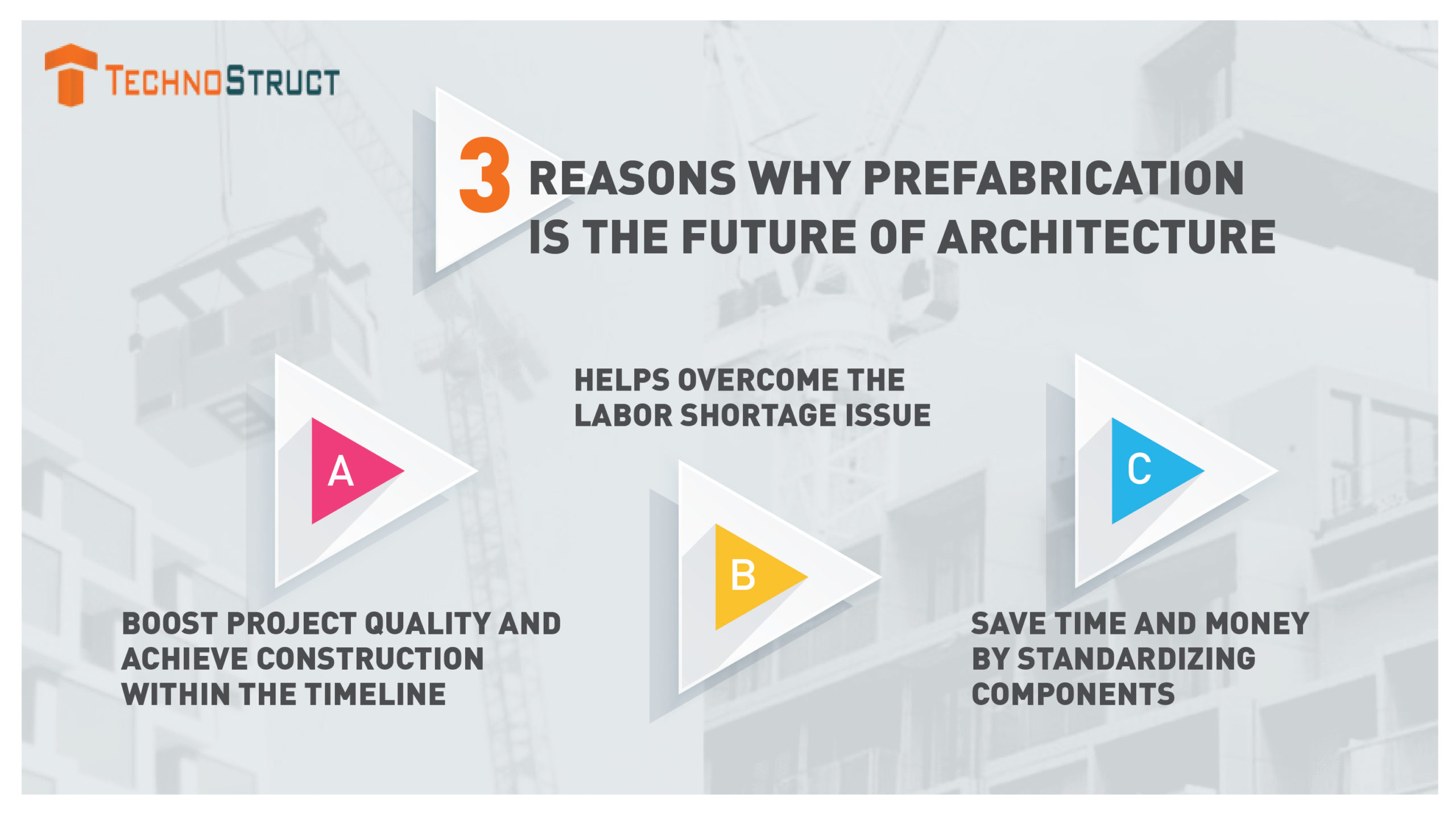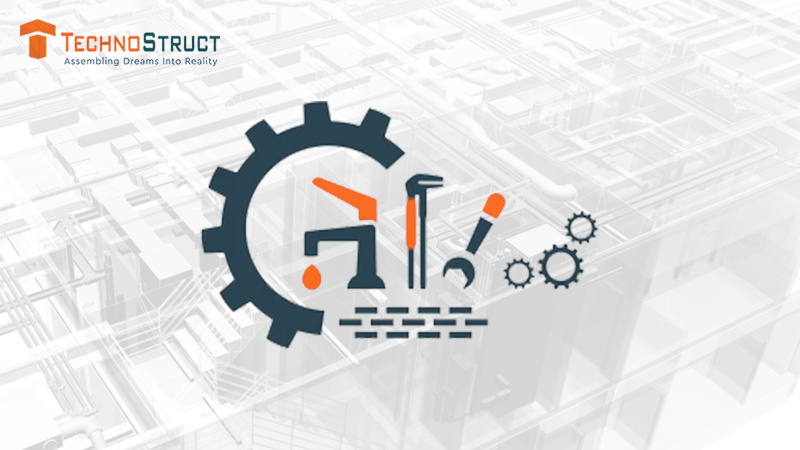
The construction landscape is vast and goes beyond just building structures. Acquiring residential and commercial construction permits in the US is also crucial. These permits guide the construction through some rules and instructions, and building a structure is not allowed without obtaining a permit.
Residential and commercial construction permits are the major ones. In this blog, we will learn about the importance of these licenses, the differences between them, and the processes for getting them.
Importance of Residential and Commercial Construction Permits
Avoid Legal Penalties
Heavy fines, halt in construction, and demolition of the structure may ensue if the owner does not acquire a residential and commercial construction permit. Violation of building codes may result in property owners or contractors receiving penalties from the municipalities. As a result, financial loss may occur or legal action may follow, which can be easily avoided by obtaining a license.
Safeguard Property Value
Acquiring a permit is vital for boosting the value and marketability of a property. Potential buyers feel more inclined towards purchasing a property that follows the legal procedure, as it demonstrates the integrity of the construction work. On the other hand, building a structure without a license makes it hard to sell, decreases its value, and costly corrections may need to be made to adhere to the rules and regulations.
Higher Safety and Compliance
Following local safety codes, zoning laws, and environmental regulations is significant for any structure, and building permits make it possible. Hence, it leads to the prevention of creating unsafe structures and plumbing, or electrical hazards. Overseeing the construction according to the rules and regulations of the US ensures the process is followed with integrity and risks of legal issues or accidents are reduced.
Offers Professional Oversight
The municipality officers inspect the project sites at various stages when one applies for residential and commercial construction permits in the US. Their guidance simplifies adhering to the codes and detecting issues at an early stage. It is beneficial for the owners and contractors as it facilitates better structural integrity, long-term functionality, and energy efficiency.
Better Insurance Coverage
Unpermitted work may not be covered by insurance companies. In case of damage to the building, which has not obtained a license, the insurance service provider may complete the claims, or a dispute may follow. On the flip side, if the owner attains a residential and commercial construction permit, its insurance policies remain valid, and owners may recover through the claims without any issues.
What is Residential Construction?
A residential structure is a building or house that people use for habitation for a long or short term. Some individuals may buy them for investment purposes. A one or two-story house, dormitory, suburban community, townhouse, duplex, and triplex, etc., are some of the major types of residential properties.
What is Commercial Construction?
People buy commercial buildings or land for business and investment purposes. Constructing these structures may take up to a year. Types of commercial constructions are: office building, movie theater, restaurant, lodge, hospital, mall, and warehouse etc.
Differences Between Residential and Commercial Buildings
Usage and Purpose
The designs for residential structures offer suitable living conditions. While commercial ones focus on business activities such as retail stores, restaurants, warehouses, and offices. Hence, according to their usage, both of them have different designs, facilities, and construction standards.
Building Materials
To accommodate heavy loads and foot traffic, professionals utilize reinforced concrete, steel frames, and fire-resistant materials to build commercial structures. In residential buildings, they leverage lighter materials and wood framing to increase comfort and cost-efficiency.
Building Regulations and Codes
Authorities apply complex and stricter building codes to commercial buildings. These codes cover various aspects such as high occupancy, accessibility (ADA compliance), emergency systems, and fire safety. On the other hand, residential codes are simple and emphasize comfort and basic safety for the occupants.
Cost and Scale
Residential buildings have a simple infrastructure and are smaller, which makes them less costly. Whereas, the construction process is at a large scale in commercial buildings, which makes them more expensive. It happens at a higher construction scale, requiring innovative systems such as elevators, HVAC, security, and materials. Also, the commercial structure’s operation and maintenance costs are higher.
Location and Zoning
Local governments design specific zones for residential and commercial buildings. According to the residential and commercial construction permit rules, commercial zones have businesses and high traffic. On the other hand, residential zones allow house construction and curb commercial activities. Implementing these laws facilitates separating housing and business areas, leading to less noise, congestion, and land use in the residential areas.
Permits
If we break down the residential and commercial construction permits processes. Owners have to apply for a permit for residential construction, and they can obtain it in one to two weeks. For commercial buildings, investors have to apply, and they can acquire in a month or longer.
Process of Acquiring a Commercial Construction Permit in the US
Research and Plan
Research regional zoning laws and building codes before applying for a commercial building permit. Additionally, hold discussions with permitting agencies and local government officers, and find out if there are particular requirements for the location of your project.
Meetings Before Application
After developing the project design with architects and engineers according to the local building codes, arrange meetings with permitting officials to learn about the potential design issues, document requirements, and the application process.
Prepare the Application
The next step is to prepare an application, which includes considering the requirements according to the permit you need. These requirements can be such as engineering reports, in-depth architectural drawings, environmental impact assessments, and site plans. Also, include all the essential documents to make sure the application is complete.
Submit the Application
Apply to the concerned government body, such as the building, environment, zoning, and health. According to the region, online and offline applications can be made. Additionally, do not forget to pay the fee.
Approval and Review Process Begins
Authorities begin the review process after the application is submitted. They may ask for additional documents and may visit the site for inspection. It may lead to revisions to designs and resubmission.
Issuance of Permit
After the review and approval, owners can receive the license. Before starting the construction, read all the requirements and conditions suggested by the authorities carefully. Also, display printouts of the same on the site.
Site Inspections and Issuance of Occupancy Certificate
After the issuance of a license, local officers may conduct inspections during construction and once it is over. Finally, they provide an occupancy certificate, which helps the owners legally occupy the building.
Process of Acquiring a Residential Construction Permit in the US
Follow the steps below in this process:
- Create a permit application.
- Create the project’s site plan, discussing with an engineer and architect to make sure it aligns with the zoning and building codes.
- Seek an appointment for the approval of the plan, as the authorities meet with the owners to review the plan. In other cases, they review the plan for several days and weeks. If they suggest some revisions, then one may have to wait even longer.
- Finally, local authorities may grant the license to green light the construction on site.
- Officers from the government bodies may visit the site to check if the construction is going on according to their suggestions.
- Acquire final approval from the local authorities after the project is completed.
Wrapping Up
The significance of obtaining residential and commercial construction permits in the US cannot be undermined. It offers multiple benefits such as increased safety, legal compliance, higher property value, and fine prevention to the owners and investors.
Hence, one must not take the risk and make sure to acquire residential and commercial construction permits from the local authorities to build safe and profitable structures.
FAQs
Q 1: How long does it take to get a construction permit in the US?
Ans: In most cases, residential and commercial construction permits are granted within two weeks in the US. However, if a zoning permit or another approval is essential, then it can take longer than that.
Q 2: What is the biggest structure you can build without a permit in the US?
Ans: In most states, acquiring a residential and commercial construction permit is not required if the structure does not exceed 120 square feet. However, different states, counties, and jurisdictions have various rules. Hence, one must contact the local authorities to learn about the construction license.
Q 3: Why is building approval important?
Ans: Having residential and commercial construction permits paves the way for maintaining safety, legal compliance, detecting and reducing risks, leading to a cost-efficient construction process.



